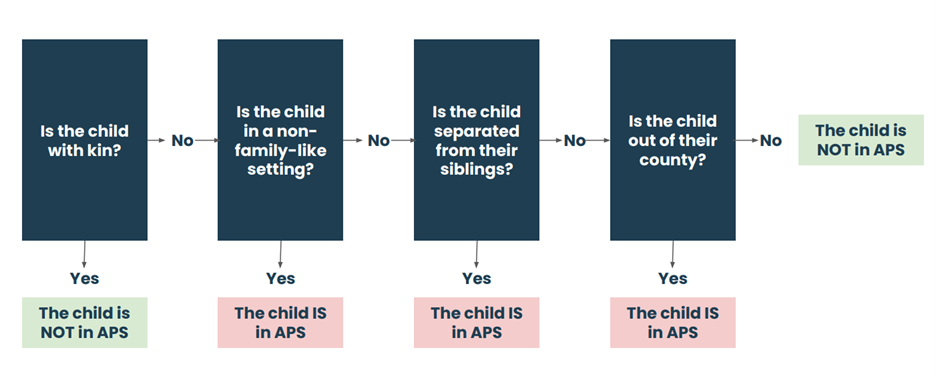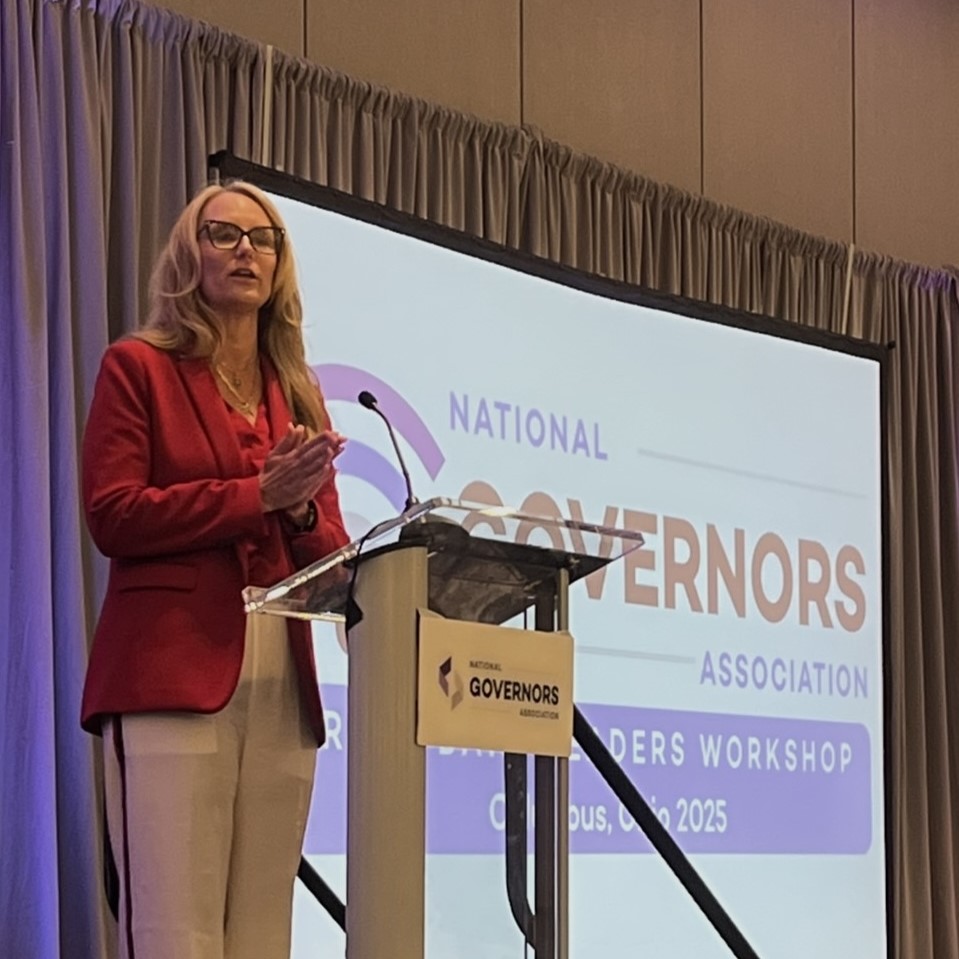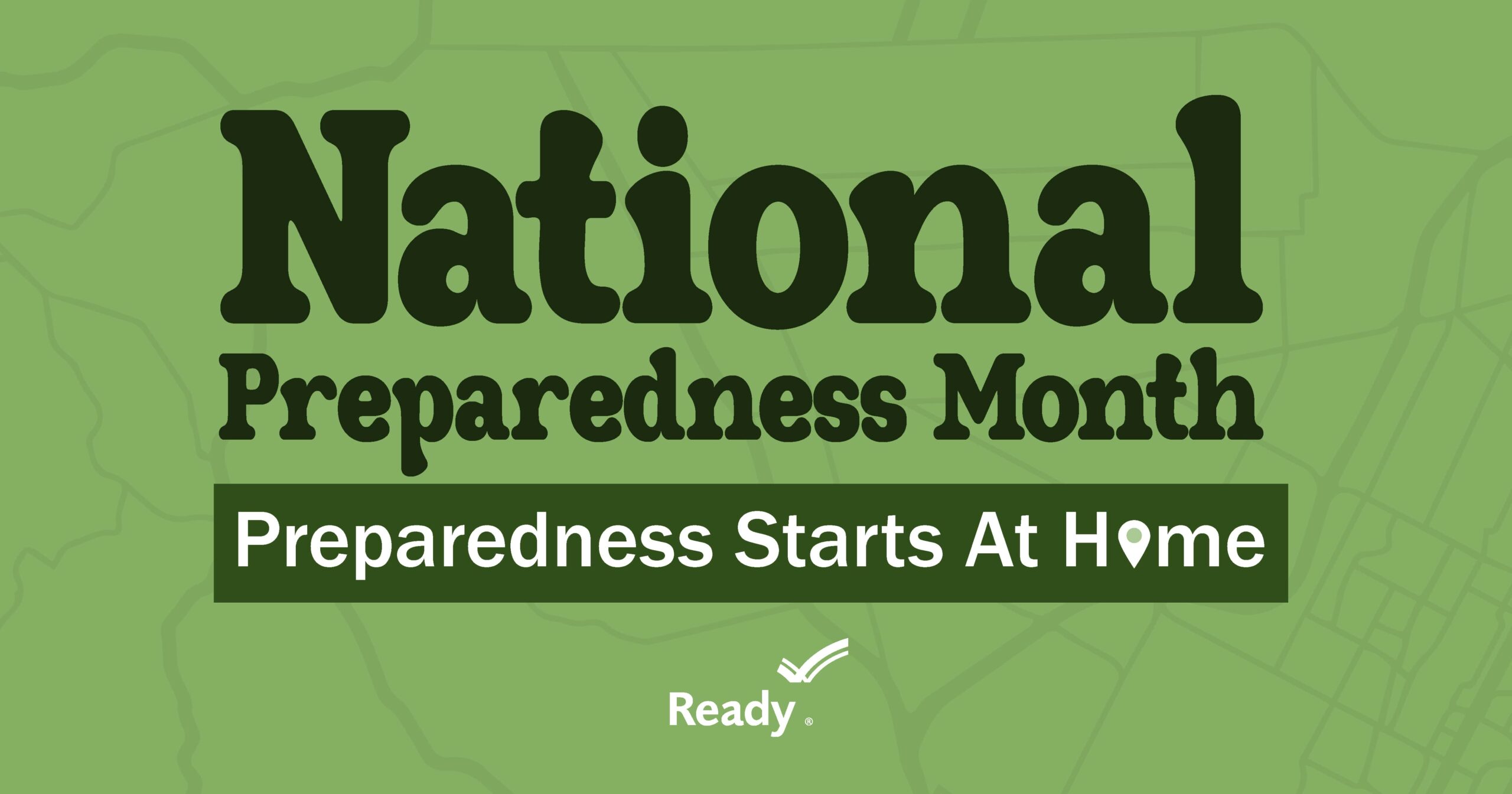On May 28th 2025, the National Governors Association Children and Families team hosted the monthly meeting of the Human Services Policy Advisors Institute (HSPAI), featuring a presentation from the Center for Radical Innovation for Social Change (RISC) at the University of Chicago on harnessing data to establish a framework and scoring system to measure and reduce adverse placements, which aims to preserve children’s connections to their home communities despite involvement with the child welfare system.
Background
Prioritizing kinship placements for children who enter the child welfare system is a growing trend across states and territories. While kinship placements are not always plausible, new data analysis and tools are making it easier to explore strategies to keep children as close to home as possible in kin-like settings. Kinship placements are associated with higher rates of permanency and stability: children placed in a kin-like setting are less likely to experience reentry into foster care.
A recording is available here. Please contact the NGA Children & Families team for the password.
Takeaways
- Reducing adverse child welfare placements while increasing placements in kin-like settings, close to home, can drive improved outcomes for state/territory child welfare systems
- Adverse Placement Scores, and other family finding models, supports improved identification of kinship and other placements close to home
- Currently trending: states and territories are exploring ways to streamline the kin licensing process for both kin and fictive-kin caregivers
- A 2023 final rule from the Children’s Bureau allows states and territories to adopt separate licensing and approval standards for relative or kinship foster family homes
- As of May 2025—
- 9 states have implemented kin-specific licensing requirements,
- 4 states have submitted a plan to the Children’s Bureau for approval, and
- 25 states have committed to implement kin-specific licensing standards and are in the process of making an implementation plan
STATE SPOTLIGHT: The California Department of Social Services is partnering with the University of California Davis, Casey Family Programs, and Think of Us to participate in the Kin-First Accelerator Program, which assists county child welfare agency efforts to keep youth connected to their communities by providing culturally appropriate training and technical assistance to county agencies to enhance their practices, policies, and efforts for family finding, support, and engagement.
Center for RISC at the University of Chicago Presentation: Adverse Placement Scores
Why Prioritize Kinship Care placements? Placements with kin—
- Are much less likely to experience disruption;
- Are often closer to the child’s community of origin and more likely to take all siblings; and
- Conserves foster care placements in non-family-like settings for children with fewer kin connections or otherwise limited placement options
Adverse Placement Scores (APS)
- Foster Insights is a nonprofit dedicated to using data to improve child welfare outcomes, herefocusing on operationalizing foster care placement need within the context of preserving children’s connection to their home communities:
- APS can be used to track the % of children in adverse placements, as defined by those children placed not with relatives or kin, AND
- Placed in a non-family-like setting;
- Separated from siblings;
- Placed far from home
- APS can be reduced by increasing placement with kin or placement in foster homes with siblings, close to home
- APS can be used to track the % of children in adverse placements, as defined by those children placed not with relatives or kin, AND

- As opposed to approximate bed/foster placement utilization rates, APS serves as a framework to better illustrate foster care placement need, help target attention and resources to areas with higher levels of children placed in an adverse setting.
- APS can demonstrate placement availability by county, zip code, or age group to identify demographics and localities most in need (i.e. foster home/bed shortages; in-county placements vs out-of-county placements)
- Using the APS framework – HOW TO:
- Engage Communities: Identify specific areas with high APS scores, which may indicate higher need for reducing barriers to kinship placements there.
- Advocate for Resources: Leverage APS data to highlight barriers with leaders to secure additional supports that can work to reduce that community’s APS.
- Inspire Coordination: Use the APS framework to collaborate with local child welfare agencies to ensure they prioritize placements within children’s home communities.












